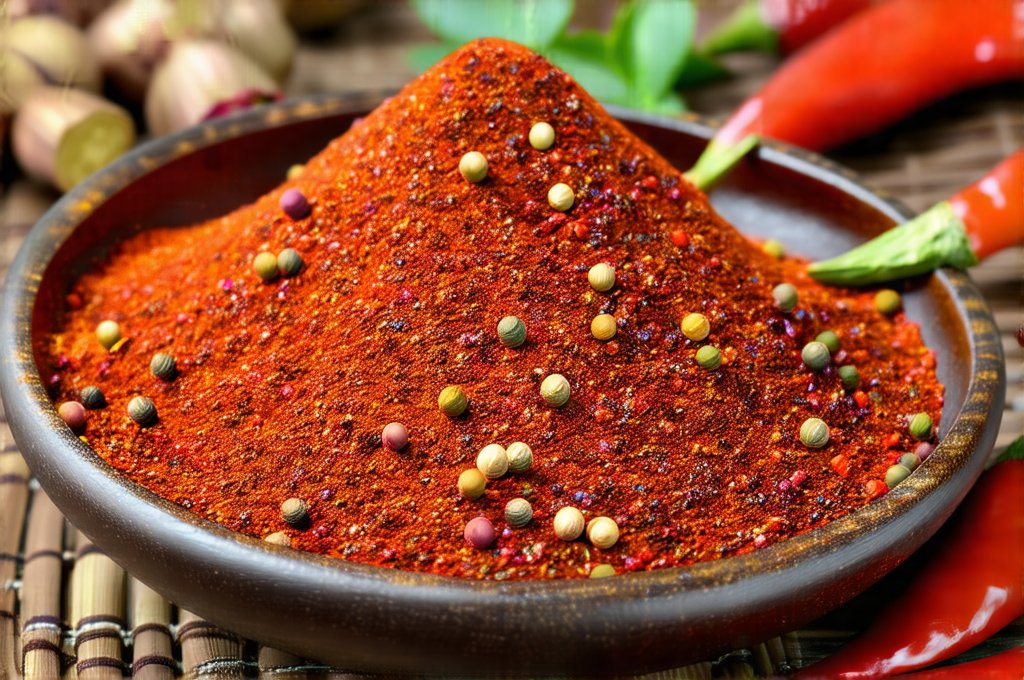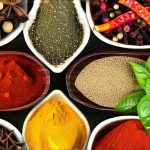The digestive system is an incredibly complex network, finely tuned to break down food and absorb nutrients. However, this delicate process can be easily disrupted by inflammation, often stemming from dietary choices, stress, or underlying conditions like gastritis, ulcers, or inflammatory bowel disease (IBD). When the stomach lining becomes inflamed, even seemingly innocuous foods can trigger discomfort – heartburn, bloating, nausea, and pain are common complaints. Understanding how different food components interact with an inflamed digestive system is crucial for managing symptoms and promoting healing. Many people instinctively reach for bland diets when experiencing stomach upset, but the nuances go beyond simply avoiding “spicy” or “strong-flavored” foods; it’s about recognizing which chemical compounds exacerbate inflammation and irritation in a sensitive gut environment.
This sensitivity isn’t just limited to overtly spicy dishes. It extends to ingredients that contribute acidity, stimulate gastric acid production, or directly irritate the inflamed stomach lining. Hot spices, while often celebrated for their flavor profiles and potential health benefits in healthy individuals, can become problematic when inflammation is present. Similarly, acidic foods like citrus fruits, tomatoes, and vinegar-based dressings can worsen symptoms. The key lies in recognizing that an inflamed stomach has a reduced capacity to cope with these substances, leading to amplified discomfort. It’s not about eliminating these foods forever, but rather adjusting dietary habits during periods of inflammation to support healing and minimize irritation.
The Role of Capsaicin and Piperine in Inflamed Stomachs
Capsaicin, the active component in chili peppers responsible for their “heat,” and piperine, found in black pepper, are known for their ability to stimulate sensory neurons – creating that burning sensation we associate with spice. While these compounds can have analgesic properties over time (and even potentially boost metabolism), they also directly irritate the stomach lining when it’s already inflamed. – Capsaicin triggers a release of substance P, a neuropeptide involved in pain transmission. In an inflamed stomach, this exacerbates discomfort and can even increase acid production. – Piperine similarly stimulates receptors that heighten sensitivity to pain and can disrupt the protective mucus layer lining the stomach. This disruption leaves the underlying tissue more vulnerable to damage from gastric acids.
The body’s response to these compounds is heightened during inflammation. A healthy stomach has a robust mucosal barrier, capable of neutralizing acidic attacks and protecting itself from irritants. However, when this barrier is compromised, even small amounts of capsaicin or piperine can cause significant discomfort. This isn’t always about the quantity of spice; it’s about the context – an inflamed gut simply has less tolerance. Individuals with conditions like gastritis or ulcers are particularly sensitive to these compounds and may need to avoid them entirely during flare-ups.
Furthermore, consuming spicy foods doesn’t just irritate the stomach directly; they can also affect gastric motility. – Spices can either speed up or slow down digestion, depending on the individual and the specific spice. Erratic motility further stresses an already sensitive system. – Rapid digestion can mean less time for nutrient absorption, while slowed digestion can lead to bloating and discomfort. This unpredictable effect makes it difficult for those with inflamed stomachs to reliably tolerate spicy foods.
Acidic Foods and Gastric Sensitivity
The stomach naturally produces hydrochloric acid (HCl) to aid in digestion. However, when the stomach lining is inflamed, its ability to regulate this acidity is often impaired. Introducing additional acidic foods – such as citrus fruits (oranges, lemons, grapefruits), tomatoes and tomato-based products, vinegar, and carbonated beverages – can overwhelm the system and exacerbate symptoms. – The increased acidity further irritates the already inflamed tissue, leading to heartburn, acid reflux, and stomach pain. – Acidic foods can also erode the protective mucus layer, hindering healing and increasing vulnerability to damage.
The impact of acidic foods is often compounded by other dietary factors. For example, combining acidic fruits with sugary foods or caffeine can further destabilize gastric pH levels. Similarly, consuming large portions of acidic food on an empty stomach intensifies their effect. Carbonated beverages introduce both acidity and gas, leading to bloating and discomfort. Individuals experiencing inflammation should be mindful not only of the acidity level of foods but also how they are combined and consumed. It’s important to remember that warm foods may be easier on the digestive system, even when inflammation is present.
It’s important to note that individual tolerance varies significantly. Some individuals with mild inflammation may be able to tolerate small amounts of citrus juice diluted in water, while others may need to avoid all acidic foods until their condition improves. The key is to listen to your body and identify personal trigger foods. – Keep a food diary to track symptoms and identify patterns. – Gradually reintroduce acidic foods in small quantities to assess tolerance.
Identifying Trigger Foods & Dietary Adjustments
Pinpointing the specific foods that aggravate your inflamed stomach can be a process of elimination. Maintaining a detailed food journal is an excellent starting point. Record everything you eat, along with any associated symptoms (heartburn, bloating, pain, nausea) and the time they occur. This helps identify potential trigger foods and patterns. – Be meticulous: include portion sizes, preparation methods, and even seemingly insignificant ingredients. – Look for consistent connections between specific foods and your symptoms.
Dietary adjustments should focus on reducing irritation and supporting healing. Consider these strategies: – Smaller, more frequent meals: This reduces the burden on the stomach and prevents overstimulation of acid production. – Bland diet: Opt for easily digestible foods like oatmeal, rice, bananas, and toast. – Avoid trigger foods: Eliminate acidic fruits, spicy seasonings, caffeine, alcohol, and fatty foods. – Hydration: Drink plenty of water to help dilute gastric acids and promote healing.
Beyond simply avoiding specific foods, consider incorporating foods that may soothe the digestive system. – Ginger has anti-inflammatory properties and can help reduce nausea. – Chamomile tea can calm the stomach and relieve bloating. – Probiotic-rich foods (yogurt, kefir) can support a healthy gut microbiome. However, even these seemingly beneficial foods should be introduced cautiously, as some individuals may experience sensitivity. If you suspect your probiotic isn’t working, consider different strains.
The Importance of Individualized Approaches
There is no one-size-fits-all approach to dietary management for inflamed stomachs. What works for one person may not work for another. Factors such as the underlying cause of inflammation (gastritis, ulcers, IBD), severity of symptoms, and individual sensitivities all play a role. – A healthcare professional can help diagnose the underlying condition and develop a personalized treatment plan. – Working with a registered dietitian can provide guidance on developing an appropriate diet based on your specific needs.
It’s also crucial to recognize that dietary changes are often just one piece of the puzzle. Stress management, adequate sleep, and avoiding smoking are all important factors in promoting digestive health. – Chronic stress can exacerbate inflammation and disrupt gut function. – Lack of sleep impairs healing and weakens the immune system. GERD and muscle tension are often linked, so addressing stress is critical.
The goal isn’t necessarily to eliminate entire food groups permanently, but rather to adapt your diet during periods of inflammation to minimize irritation and support healing. As symptoms subside, you can gradually reintroduce foods one at a time, carefully monitoring for any adverse reactions. This process requires patience, self-awareness, and a willingness to experiment.
Long-Term Management & Prevention
Once the acute phase of inflammation has subsided, focus on long-term strategies to prevent future flare-ups. – Maintain a balanced diet rich in fruits, vegetables, and whole grains. – Limit processed foods, sugary drinks, and unhealthy fats. – Manage stress through techniques like yoga, meditation, or deep breathing exercises. – Identify and avoid personal trigger foods.
Regular check-ins with your healthcare provider are essential to monitor your condition and adjust your treatment plan as needed. In some cases, medications may be necessary to manage underlying conditions or reduce acid production. – Consider taking a probiotic supplement to support gut health, but consult with your doctor first. – Prioritize sleep and exercise to maintain overall well-being. When traveling, careful travel meal planning is essential.
Ultimately, the key to managing an inflamed stomach is understanding its unique sensitivities and tailoring your diet and lifestyle accordingly. By embracing mindful eating habits, identifying trigger foods, and prioritizing self-care, you can promote healing, minimize discomfort, and restore digestive harmony. A focus on balanced sauces and marinades can also help reduce irritation. Finally, understanding gut testing can provide valuable insights into your digestive health.


















